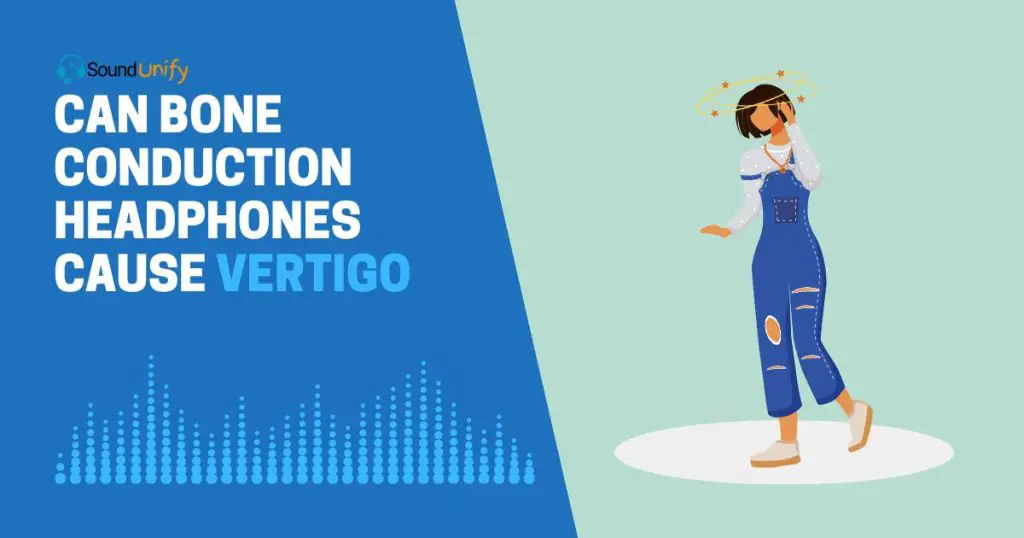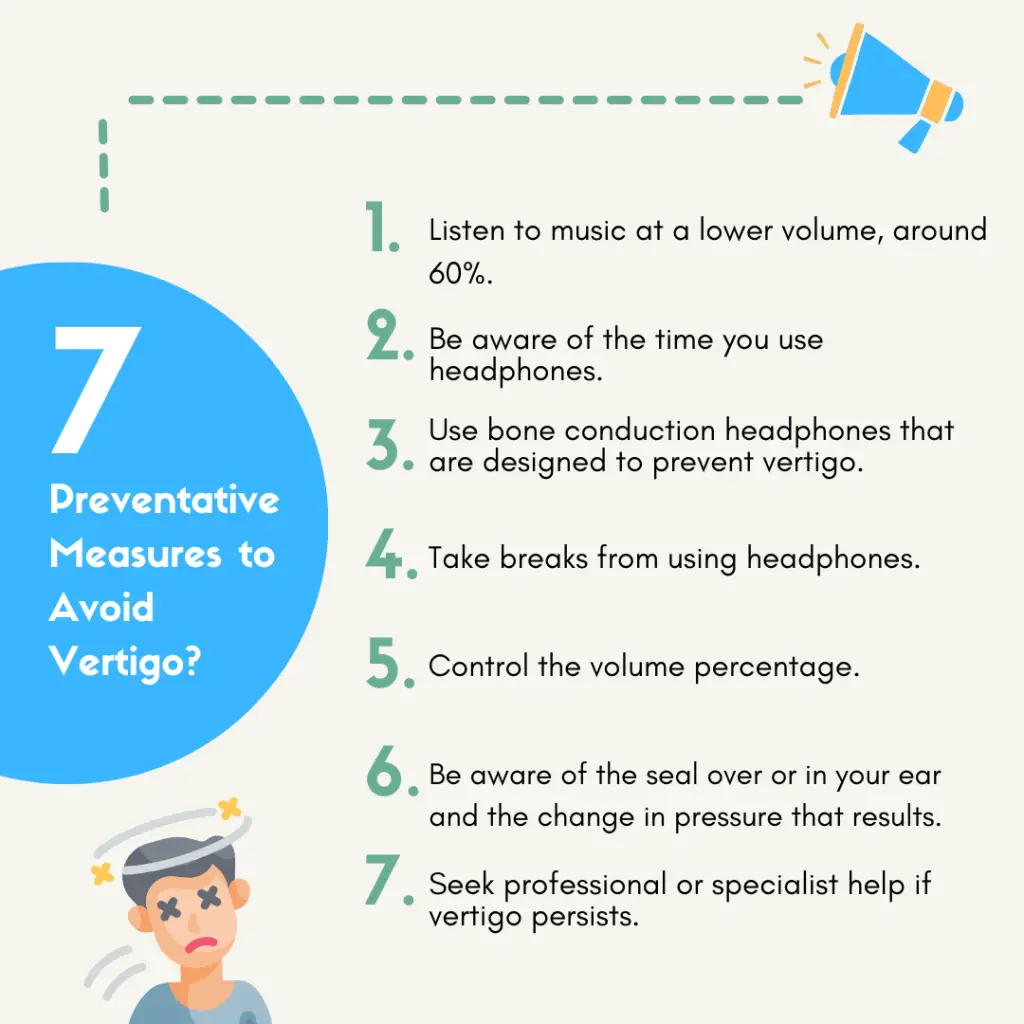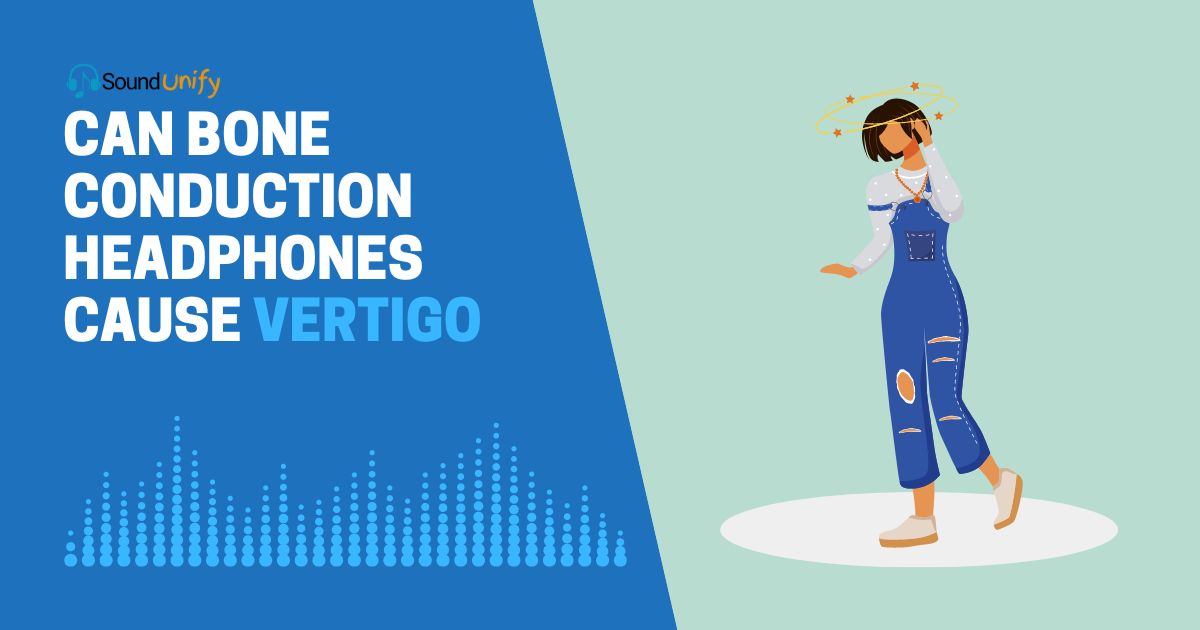Bone conduction headphones can cause vertigo, but it's not common. Most people use them without experiencing any problems. But let's dive a little deeper into the subject.
I’ve been fascinated by bone conduction technology for years. It’s incredible how it allows us to perceive sound, not through our ears, but via vibrations in our skull! Yet, a question often arises: can bone conduction headphones cause vertigo?
Vertigo can turn your world upside-down, quite literally. Imagine feeling dizzy, unsteady, or like your surroundings are spinning, all while trying to enjoy your favorite tunes.
And here’s the kicker: these symptoms are typically associated with ear-related problems. So, you might be wondering how headphones that bypass the ears can cause such issues.
In this article, we’re going to unravel this mystery together. I’ll share my research, expert opinions, and personal experiences to illuminate this puzzling topic.
So, strap in for an enlightening exploration into the world of bone conduction headphones and vertigo.

Understand Bone Conduction Headphones
Bone conduction headphones are a fascinating innovation. These headphones use your skull as a pathway rather than traditional sound delivery through the ear canal. The science behind it is simple: vibrations.
The headphones convert audio signals into vibrations, which are then transmitted through your skull. Your inner ear picks up these vibrations and translates them into sounds.
It’s a bit like feeling the vibrations from a loud bass speaker, but much more refined.
Why Bone Conduction?
You might wonder, “Why would I want to use my skull to listen?” Well, there are a few reasons.
Firstly, bone conduction headphones allow you to maintain awareness of your surroundings. This can be a lifesaver in situations where hearing environmental noises is critical, like when you’re cycling or running outdoors.
Secondly, these headphones provide an alternative for individuals with certain types of hearing loss.
Conventional headphones might not work well, but bone conduction headphones bypass the outer and middle ear, sending sound directly to the inner ear.
Health and Safety Considerations
Now, let’s touch on a question I often get asked: “Can bone conduction headphones cause health issues?” Yes, they can, like any other headphones. Vertigo is one such issue.
It’s a sensation of feeling off balance and is associated with a disturbance in the balance organs of the inner ear. Some users have reported experiencing vertigo symptoms after using bone conduction headphones.
This happens when you listen to too much noise with your headphones.
What Are Some Common Symptoms of Vertigo?
Vertigo often manifests as dizziness, headaches, nausea, and blurred vision. The severity of these symptoms can vary from person to person.
| Vertigo Symptoms | Description |
|---|---|
| Dizziness | An early symptom, often related to spatial disorientation |
| Headaches | Pressure buildup in the skull due to imbalance |
| Nausea | Similar to motion or seasickness |
| Blurred Vision | Inconsistency between what the eyes and ears are processing |
The Connection Between Bone Conduction Headphones and Vertigo
Bone conduction headphones, as the name implies, work by transmitting sound directly to your inner ear through the bones of your skull. This is quite a departure from traditional headphones that transmit sound through the air and into your ear canal.
So, what’s the connection between these innovative gadgets and vertigo, a condition characterized by a sense of spinning or loss of balance? Let’s dive in and examine this intriguing relationship.
Vertigo is often associated with issues in the inner ear, particularly the vestibular system. This system is critical to maintaining our balance and sense of spatial orientation.
When something disrupts it, like an infection or inflammation, we may experience vertigo. But what about bone conduction headphones? Can they disrupt this delicate system?
In theory, it’s possible. When you use these headphones, vibrations are sent through your skull and into the inner ear.
These vibrations could stimulate the vestibular system in ways it’s not used to. I found myself wondering, could this overstimulation lead to vertigo?
After delving into the research, the answer seems to be: not typically. There are no widespread reports of bone conduction headphones causing vertigo. Of course, everyone is different.
Some people might be more sensitive to these vibrations and experience discomfort or vertigo. But based on the data, there are some potential causes.
12 Reasons Why Bone Conduction Headphones Cause Vertigo?
Vertigo is not a common side effect of bone conduction headphones. However, certain factors might contribute to vertigo in some users. Let’s delve into these factors.
1. Individual Sensitivity
Each of us is unique, and so is our sensitivity to vibrations. For some, the stimulation created by bone conduction headphones might be too much for our vestibular system—the part of our inner ear and brain that helps control balance and eye movements. This overstimulation could potentially lead to vertigo.
Solutions:
- Gradual Introduction: Just like one acclimates to a new pair of glasses, use these headphones in small doses. As your body adapts, you can gradually increase usage.
- Alternative Options: If the discomfort persists, it’s okay to consider other options. Traditional air-conduction headphones might be a more comfortable alternative for you.
2. Pre-existing Vestibular Disorders
If you already have a vestibular disorder, additional stimulation from these headphones could amplify your vertigo symptoms. It’s like adding fuel to an already burning fire.
Solutions:
- Medical Consultation: It’s essential to consult your healthcare provider before trying these headphones. They can provide personalized advice based on your medical history.
- Careful Monitoring: Keep a close eye on your symptoms when using the headphones. Limiting or stopping their use is best if you notice increased vertigo symptoms.
3. Prolonged Usage
Using these headphones for extended periods could lead to fatigue in your vestibular system, much like how your legs might feel after a long run. This fatigue might manifest as vertigo symptoms.
Solutions:
- Frequent Breaks: Ensure to give your ears a break when using these headphones. This rest period can be likened to taking a breather during a workout.
- Usage Moderation: It’s essential to limit the widespread use of headphones each day. Think of it as not overdoing your daily calorie intake.
4. Technical Malfunctions
Just like a car that’s not running smoothly, with irregular or overly intense vibrations due to a malfunction in the headphones. This could potentially disrupt your vestibular system, leading to vertigo symptoms.
Solutions:
- Regular Checks: Just as you would service your car regularly, inspect your headphones for signs of damage or malfunction.
- Quality Products: Investing in headphones from a reputable manufacturer could save you from technical issues.
5. High Volume Levels
Blasting loud music can stress our auditory system like loud noise can startle you. This stress might potentially lead to vertigo symptoms.
Solutions:
- Volume Control: Keep the volume levels moderate to avoid stressing your ears. It’s like not shouting in a conversation.
- Safe Features: Consider headphones with volume-limiting features, much like some cars have speed limiters for safety.
6. Improper Fit
If the headphones don’t fit right, they could exert unnecessary pressure on the skull, much like a tight hat. This pressure might lead to discomfort and possibly vertigo.
Solutions:
- Correct Fit: Make sure the headphones fit correctly and adjust as necessary. It’s just like adjusting a hat so it sits comfortably on your head.
- Manufacturer’s Advice: Always check the manufacturer’s guidelines for proper fit and usage. They’re like the instruction manual for a new gadget.
7. Low-Frequency Vibrations
Low-frequency vibrations might interfere with our inner ear’s balance mechanisms, much like how a rumbling truck can shake a building. This could potentially lead to vertigo.
Solutions:
- Limit Exposure: Try to minimize your exposure to low-frequency sounds, similar to how you might avoid a noisy construction site.
- EQ Settings: Adjust the frequency response of your music using equalizer settings, just like adjusting the bass and treble on your home stereo.
8. Underlying Health Conditions
Certain health conditions and medications can cause vertigo. Additional stimulation from the headphones might trigger these symptoms, much like an existing injury can flare up with activity.
Solutions:
- Medical Advice: Consult your healthcare provider if you have frequent vertigo symptoms. It’s like getting a mechanic to check a car acting up.
- Self-Awareness: Be mindful of how your body reacts when using the headphones, similar to how a driver needs to be aware of the car’s performance while driving.
9. Dehydration or Fatigue
Dehydration and fatigue can cause dizziness and imbalance. Using headphones when you’re in this state might potentially worsen these symptoms.
Solutions:
- Stay Healthy: Stay hydrated and well-rested, especially when using headphones for extended periods. It’s as essential as having a balanced diet and getting enough sleep.
- Careful Usage: Limit your use of headphones during physically demanding activities. It’s akin to not wearing heavy boots while running.
10. Age
As we age, our bodies naturally undergo changes that might make us more susceptible to vertigo. This includes changes in how our body responds to stimuli like the vibrations from bone conduction headphones.
Solutions:
- Moderate Usage: As we age, we must use headphones moderately and responsibly. It’s similar to how our diet or exercise routines might need to change as we age.
- Health Monitoring: Regular health check-ups can help monitor changes in your vestibular system. It’s as essential as any other routine health screening.
11. Gender
Studies have shown that women might be more susceptible to certain vestibular disorders than men. This could make some women more likely to experience vertigo symptoms when using bone conduction headphones, much like some women are more prone to motion sickness.
Solutions:
- Personalized Usage: Tailor your headphone usage to your comfort level, similar to how clothing needs to be the right fit for you.
- Medical Consultation: If you’re a woman and experience frequent vertigo symptoms, it’s a good idea to consult your healthcare provider. They can provide advice based on your specific needs.
12. Genetics
Genetics can play a role in how our body reacts to certain stimuli. Some of us might be genetically predisposed to be more sensitive to the vibrations from bone conduction headphones, like some people have a natural predisposition to allergies.
Solutions:
- Awareness of Family History: If vertigo or other vestibular disorders run in your family, you might be more susceptible to these conditions. It’s like knowing your family’s medical history for other health conditions.
- Preventive Measures: Taking precautionary measures such as moderate usage and regular breaks can help manage potential vertigo symptoms. It’s akin to how you might take extra precautions if you know you have a higher risk for certain health conditions due to genetics.
What Are Some Preventative Measures to Avoid Vertigo?

If you use bone conduction headphones, you could feel dizzy if you are sensitive to them. This is especially true if you listen to loud noises while using them. Here are some preventative measures that users can take to avoid vertigo when using bone conduction headphones:
- Listen to music at a lower volume, around 60%.
- Be aware of the time you use headphones.
- Use bone conduction headphones that are designed to prevent vertigo.
- Take breaks from using headphones.
- Control the volume percentage.
- Be aware of the seal over or in your ear and the change in pressure that results.
- Seek professional or specialist help if vertigo persists.
What to Do If You Experience Vertigo Symptoms?
If you experience symptoms of vertigo, here are some steps you can take:
- Pause and Ground Yourself: If vertigo strikes, the first thing to do is to find a safe spot to sit down. Squat close to the ground to prevent a fall or sudden movement. This helps to stabilize your body and reduce the feeling of dizziness.
- Breathe Deeply: Once you’re grounded, close your eyes and take slow, deep breaths. This can help to calm your nervous system and may reduce the intensity of the vertigo symptoms.
- Use the Home Epley Method: This is a self-treatment method you can use at home to alleviate vertigo. Start by sitting on the edge of a bed and turn your head to one side. Then, lie back slowly, and once you’re fully reclined, turn your head to the other side. Stay in this position until the vertigo subsides.
If your symptoms persist or become more severe, seeking medical attention is essential. Vertigo can sometimes be a sign of other health issues that require professional treatment. Always listen to your body and take precautions to ensure your health and well-being.
FAQs
Can bone conduction headphones cause tinnitus?
Bone conduction headphones are not meant to cause or make tinnitus worse. However, if you use them in noisy environments or incorrectly, you may still develop tinnitus after using them.
What are the disadvantages of bone conduction headphones?
Bone conduction headphones are better than regular ones but have some problems. For example, sound can leak out of the speaker in these headphones, which isn’t as good as regular headphones.
Do bone conduction headphones damage hearing?
Bone conduction headphones can hurt your ears if you use them incorrectly. Users’ biggest mistakes are listening too loud, sleeping with them on, and wearing them too long.
The Final Verdict
While bone conduction headphones benefit many, they can cause vertigo in specific individuals, mainly when used at high volumes.
However, the risk of vertigo can be minimized with proper precautions like maintaining safe, sound levels and taking breaks.
If vertigo symptoms do occur, several self-treatment methods can alleviate discomfort. Always remember, your health comes first. Listen responsibly and enjoy your audio safely.
James Dimento is a Chief-in-Editor of SoundUnify. He is a headphone enthusiast and creative writer passionate about audio technology. He has three years of experience writing about headphones and sound quality and is responsible for creating reviews and taking care of all administration.
